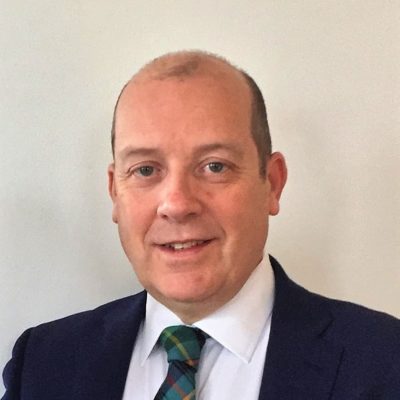Our ‘Thinking Out Loud’ series, delves into the minds of our experts, to find out about the important topics our clients are challenged with today.
This interview is with Steve Glasgow a Director at Wavestone with over 30 years’ experience within networks and IT Infrastructure. He specialises in providing high value strategic advice to global organisations. Steve manages and delivers complex engagements with leading international organisations, which spans strategy development through to delivery realisation and focuses on delivering tangible commercial, service and operational benefits.
We discuss the trends in the networks, cloud and next generation IT space, exploring the challenges he is seeing first-hand that companies are facing and offers his personal thoughts on what could be done to overcome them.
What do you see as the key trends in Next Generation IT over the next 5 years?
Firstly, the expectations of end users have changed massively over the last few years, with the majority of people looking for a digital first interaction. Take the banking industry as an example. The acceleration of branch closures is huge, with most people now banking via an app. These are seismic shifts in how people want to interact with organisations. Organisations must question how to deliver these types of services efficiently. AI and data analytics are key building blocks. There’s a blurring of the lines of when real people are needed to do things and when it can be automated.
Secondly, I can’t not mention cloud. It’s cloud, cloud and more cloud.
Hybrid and multi-cloud deployments will be the ultimate landing point. People are getting more mature in the cloud world, though just now it’s often with only one or two suppliers. The challenge is to really harness the on-demand compute, network and security capabilities on offer. Being able to maintain agility in a multi cloud world is also going to be a challenge. Failure to get rid of legacy equipment that doesn’t fit well in the cloud world can hold people back in terms of where they want to go.
Lastly, the world has changed in the way people think in terms of physical buildings; offices, branches, shops, and corporate head offices and data centres. The way things have developed, and accelerated under the COVID pandemic, is that we need to now think more about connecting users, irrespective of where they are to the right applications, workloads and compute power, that sits in the cloud.
What do you see as the key challenges in next generation IT in the next 5 years?
Maintaining agility and efficiency in a multi-cloud world
It’s very easy to put all your eggs in one (or two) baskets, which may not be the most efficient way or may compromise on resilience. A question I often get asked is:
How can I broker between the different kinds of cloud worlds and be able to move workloads as appropriate and spin up new things, but still do that efficiently?
The cloud offers an ability to scale very quickly. But as you deploy, costs are incurred, and therefore it’s very easy for costs to spiral out of control. Moving workloads between cloud platforms is more complex. Managing this agility efficiently and effectively will continue to be a challenge, as people move into this multi cloud world.
Legacy
There’s been an ongoing challenge for many years around legacy and people need to tackle some of the underlying areas.
There are applications out there that are ages old and companies no longer have the expertise to maintain them, yet they’re still critical. Having a clear plan to move away from legacy applications and infrastructure is vital and it has to be addressed otherwise it will hold people back.
Once things are moved into more of a cloud world then legacy is less of an issue because those cloud platforms are maintained by definition, unlike legacy platforms.
Focusing on getting rid of the old stuff, and not just looking at the new is very important.
Driving leading edge products
Continuing to drive leading edge products that are easy to engage with is a challenge.
A CTO needs to be thinking about the organisation’s external clients, how they interact and how they want to interact. This is often through multiple channels, and it can be different for different groups
Some people may be more comfortable interacting over the phone or physically, whereas others will rapidly adopt new channels and new technologies. So keeping ahead in the multi-channel world is important.
The war for talent
This is a big issue at the moment. We are seeing a lot of clients that are really struggling to find the right kind of skill sets to help them drive forward on their agenda.
Organisations need to have a strong forward agenda and a positive drive to create new things and do things differently. This will attract the right kind of people that are going to make a difference.
Large organisations should have a clear strategy and a roadmap, which doesn’t have to be prescriptive, but it should set some direction of travel. Some of the big issues and dependencies need to be addressed in meaningful metrics and measurement of success.
A roadmap provides a central purpose and a vision of where you want to get to, and even though events will happen, things will change, the roadmap can always be revised.
What is key is that you’re not just responding to the latest trend or the latest product or approach that’s come from a supplier, you’ve actually done a bit of homework of where the business needs to go and mapped out some of those key stages.
And I think having that as the central guide is very useful in moving forward.
A topic that must be mentioned; where do you see sustainable IT fitting into this space?
It’s clearly a growing agenda and a growing concern for a lot of organisations. We’ve seen a real rise in the growth of environmental social corporate governance for a lot of organisations. In the world where you’re able to buy and broker between different services, then it will be important to understand how different platforms compare from an environmental point of view, such as different kind of compute, data centre, cloud providers, and this will start to factor in more into selection decisions.
It also plays with the legacy issue that I touched on, the more you can get rid of legacy equipment duplication, which is often less efficient from a power and environmental point of view, then that’s all the better. I think we’ll start to see IT providers differentiating themselves based on their environmental footprint and their ability to be efficient in that regard. And I think organisations will look to that as part of a key buying decision.
How do you see Wavestone helping with these topics?
As independent advisors, working across many different organisations, we see how technologies are being adopted, where the wrinkles are, what’s actually available and what isn’t. We understand exactly where the market is, which allows us to give very much independent advice and work alongside our clients in addressing their needs.
We help our clients to think about new products and services from creation and initial business case through to scaling and operationalising. There’s often a big challenge here and we help through that lifecycle to get to the “go” decision, and then execute.
Final Piece of Advice
Have a plan and roadmap, remain flexible, update it regularly, track progress, but maintain alignment with where the business goes.
If you look back over the last five years, the directions that things have taken was really hard to predict. Staying in step with the business from an IT point of view is absolutely key, but having a plan that that is driving you forward and guiding what you are doing is also key.

Steve Glasgow
Director
As a result of the COVID challenges, there’s been a lot of tactical activities over the last couple of years. Now is the time to invest in strategic forward looking plans and to then deliver against a very clear strategy.






